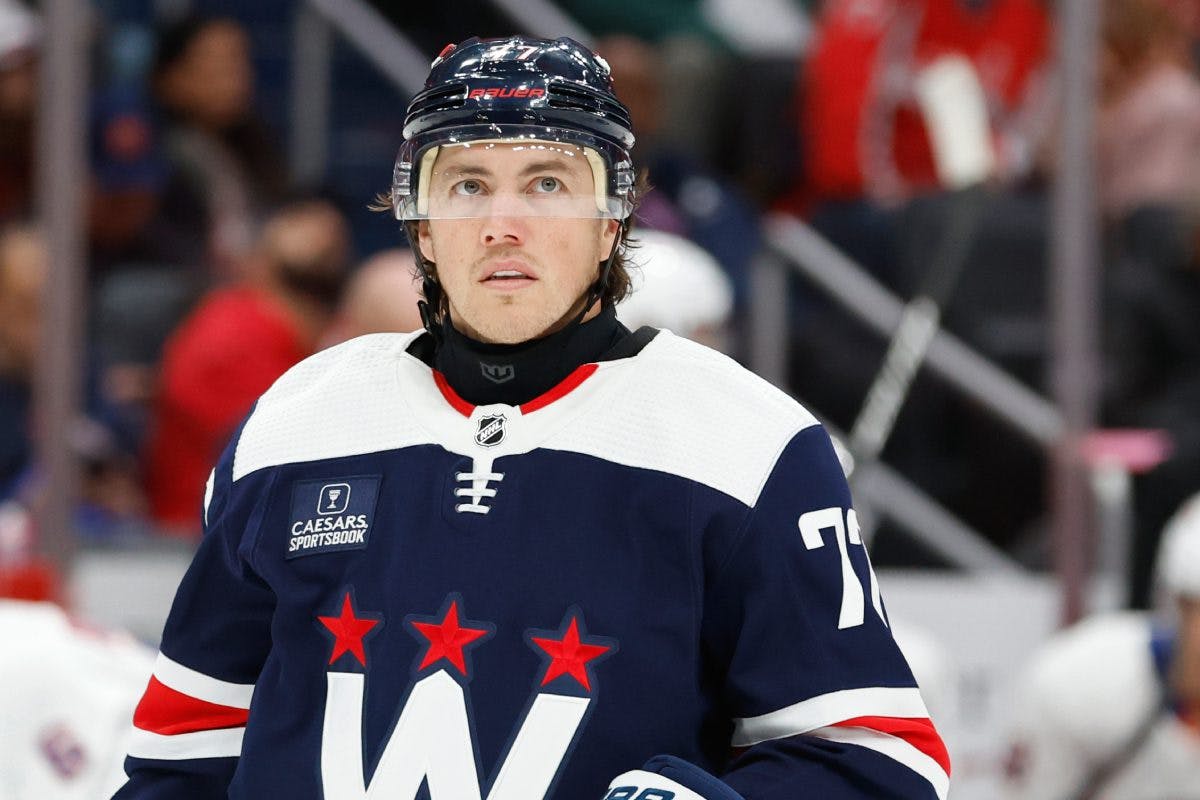Adam Johnson’s death influences shift in attitude around neck protection

This article was written by Andrew Willis, who is part of the Professional Hockey Writers Association x To Hockey With Love Mentorship Program. This program pairs aspiring writers with established members of the association across North America to create opportunities for marginalized people that do not traditionally get published on larger platforms covering hockey.
To Hockey With Love is a weekly newsletter covering a range of topics in hockey – from the scandals of the week to providing a critical analysis of the sport.
More than a month after Adam Johnson’s death, the topic of neck protection continually remains in the discussion around player safety.
The 29-year-old Johnson was playing for the Nottingham Panthers in England’s Elite Ice Hockey League when an opponent’s skate blade cut his neck during an on-ice collision, leading to the former NHL player’s death.
Mary-Kay Messier, Bauer Hockey’s vice-president of global marketing, said that the tragedy has been a turning point in how teams view protective equipment. “This just feels different,” she said. “We’re seeing different things. We’ve seen mandates. At the elite level, we’re seeing volunteer adoption by elite athletes.”
Skate blade injuries, specifically those to the neck, are not uncommon in the sport of hockey. Back in 1989, Buffalo Sabres’ goaltender Clint Malarchuk suffered a sliced carotid artery in a game against the St. Louis Blues. In 2008, Florida Panthers’ forward Richard Zednik, had his carotid artery cut during a collision with a teammate. Earlier this year, an Army hockey player, Eric Huss, was rushed to the hospital after taking a rogue blade to the neck in a game against Sacred Heart.
Malarchuk, Zednik, and Huss survived their harrowing experiences, but others, like Johnson, have been less fortunate.
In Jan. 2022, high school sophomore Teddy Balkind caught an opposing player’s skate blade in the neck during an otherwise benign hockey play. The 16-year-old passed away at the hospital. Protective neck equipment came into the spotlight following Balkind’s death, though the push for better protective policies lost steam. Johnson’s death has changed that.
Joe Ernst, the senior vice president of hockey operations for the ECHL, addressed it with Jacksonville Icemen broadcaster Arley Johnson during a game on Nov. 24.
“We’re in discussions with our player safety committee about a few different things, neck guards obviously one of them,” he said.
“Right now, supply and demand is the key issue with the neck guards. I think partially, if we had supply, [a mandate] would already probably be put in place.”
Many governing bodies and leagues are moving towards adopting protective neck equipment. In the days following the incident, the English Ice Hockey Association enacted a mandate set to begin on Jan. 1, 2024. In Germany, the Deutsche Eishockey Liga did the same, making neck guards mandatory beginning in 2024. The WHL, which was the last remaining major junior league in the CHL to not have mandatory neck protection, reversed course by making neck protection mandatory within a week of Johnson’s death. The Pittsburgh Penguins now require neck protection for their AHL and ECHL affiliates, the Wilkes-Barre Scranton Penguins and Wheeling Nailers. The Texas Stars, Dallas’ AHL affiliate, is considering a similar policy.
Since Johnson’s death, players at various leagues have individually adopted the use of neck protection, even in leagues where a mandate for the equipment would have to come with collaborative efforts from players unions.
“We’re gonna have to go through the union, but listen, we’re trying to protect our players,” Ernst stated.
Those types of considerations about player safety have resulted in a surge of demand for neck protection, with Bauer seeing a dramatic rise in sales of the product. “What we’ve seen is an incredible increase in demand, about 40 per cent,” said Messier.
“So we’re working to ramp up manufacturing to meet the demand…I think the gap really exists because manufacturers usually build the current year’s inventory based on historical numbers. So it’s that increase [in demand] that’s creating the gap, but we are proactively taking steps to ramp up our inventory, not only to meet current needs but to project out much higher future needs with more mandates coming into effect.”
Some may argue that the effectiveness of neck guards and other neck protection gear is unproven. However, a 2015 study published in the National Library of Medicine proves a majority of neck guards are effective at preventing lacerations at low force. At higher forces, the materials the equipment is constructed from are a decisive factor in prevention efficacy. Though limited in its scope, the study was able to determine that products using Kevlar or Spectra fibers saw higher rates of injury prevention.
“We know Kevlar is an incredibly effective material…that it is cut resistant”, said Messier.
“I think the important thing for players and parents to know is [how] to really evaluate the protection. What is the material in that product that makes it cut resistant? That’s number one. Number two, is it certified? I think players and parents need to know that, because there are products that are more for comfort but less for protection. The third thing – it needs to be worn properly. Obviously if it’s not worn as it’s intended to be, it won’t provide that level of protection. Coverage is as important as cut-resistant material.”
The change in approach will continue as the game continues to evolve.
“I’ve never seen a shift like this,” said Messier.
“I think the incident hit very close to home….[players are] thinking about the necessity to protect themselves as the game is faster [and] the players are bigger and stronger.”
_____